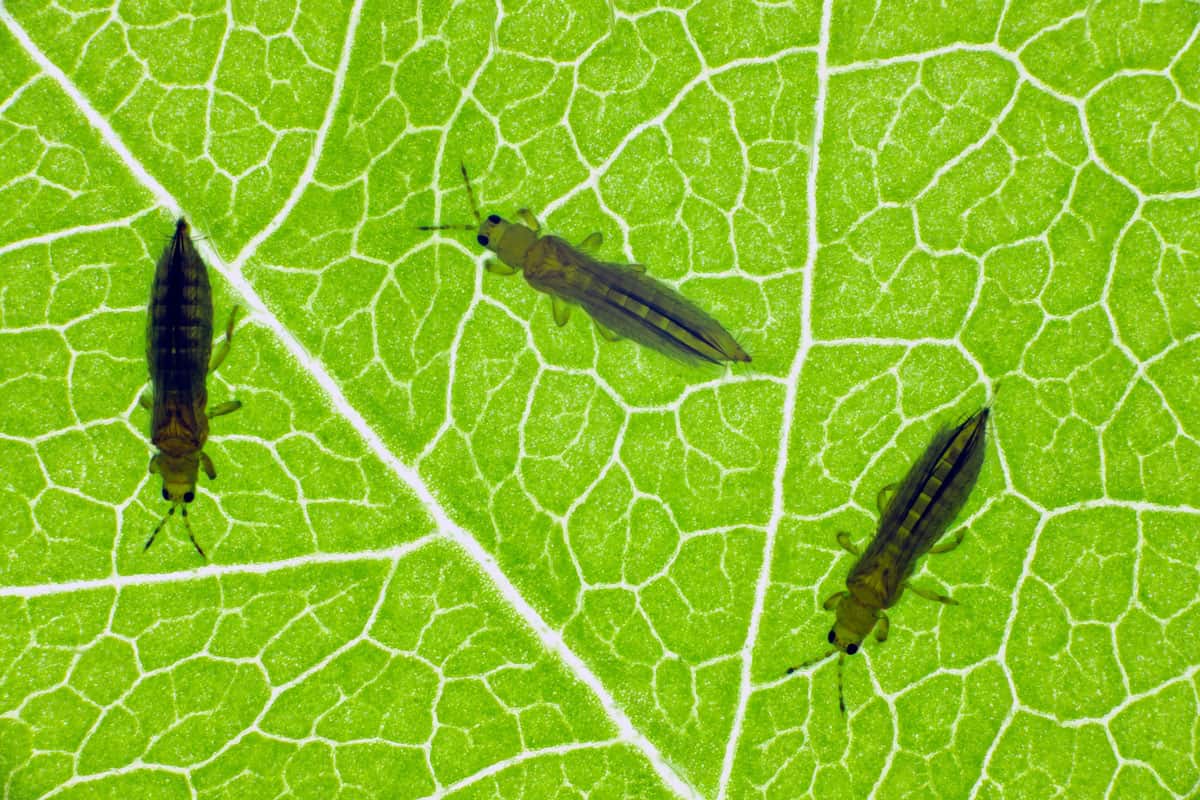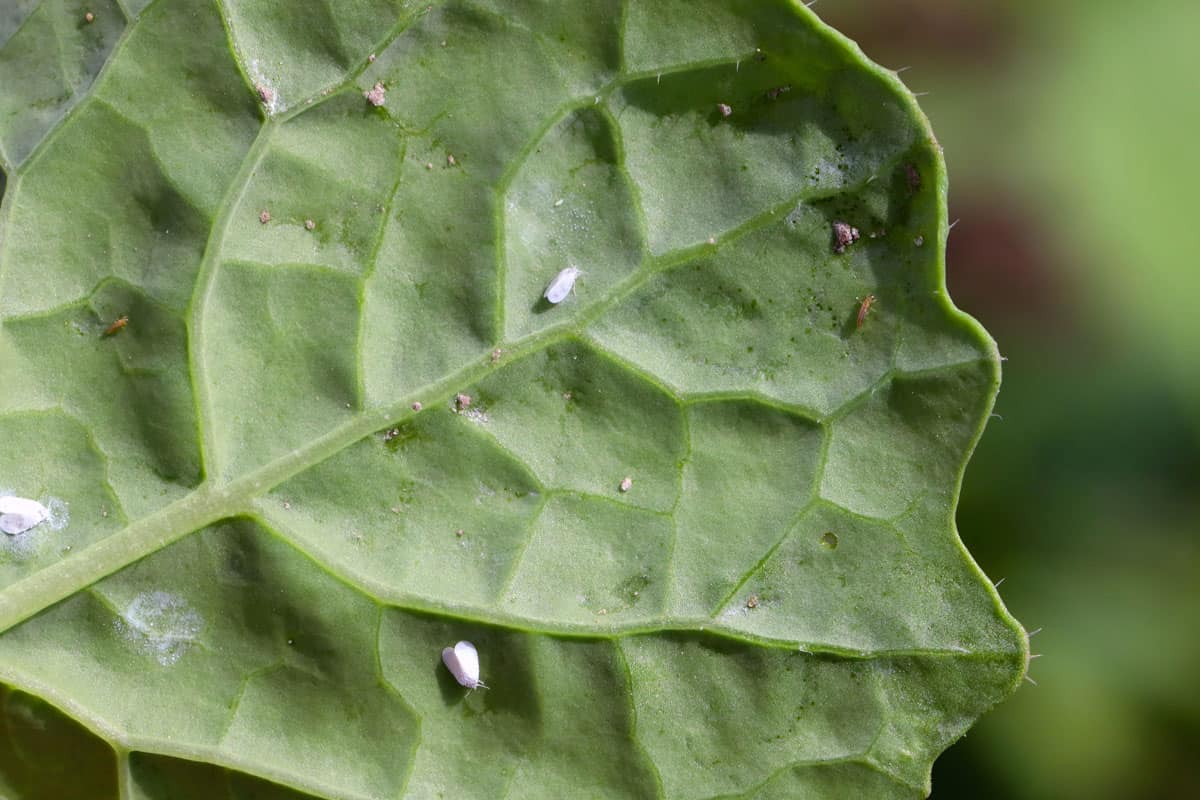Thrips can wreak havoc on your plants. These pests damage the leaves and flowers of the plants they infest and can also spread to nearby plants. How do thrips spread to other plants? We researched this question, and here's what we found.
Understanding how thrips spread to other plants is crucial for preventing infestations and keeping your garden healthy. Thrips can spread to other plants in different ways, including the following:
- Flying
- Crawling
- Hitchhiking
- Water
- Laying eggs
How can you keep these pests from spreading? Are they active all year round? We will discuss these questions and look at how thrips transfer from one plant to another. We will also share ways to prevent them from spreading and tips on how to manage an existing infestation. So let's dive in!

How Do Trips Transfer to Different Plants?

Thrips are tiny insects that feed off plants, causing harm to leaves, flowers, and fruits. They are a typical problem in gardens and agricultural fields and can spread fast from plant to plant.
Learning how thrips spread to other plants is necessary to control these pests. Listed below are some of the ways thrips can spread to other plants:
Flying
These tiny insects are excellent fliers and can fly long distances, especially when the wind is favorable. Thrips can be carried by wind and air currents to other plants, especially if the plants are close together.
If you have a thrip infestation, isolate the infested plants and take measures to prevent the insects from being blown onto healthy plants.
Crawling
Thrips can also crawl from plant to plant, using their slender bodies to squeeze through narrow spaces. They can crawl along stems, leaves, and other plant parts, searching for new food sources.
Hitchhiking
One of the most common ways thrips spread to other plants is hitchhiking. Thrips can stick on the clothes, hair, and skin of humans and animals and transfer from one place to another.
When moving plants or soil from one location to another, you should inspect them to ensure no thrips are present. These insects can also disperse through infested cuttings, seedlings, and garden tools like pruners or shears.
Once they reach a new location, they can quickly infest new plants, causing damage and reducing crop yields. If you have been using tools on infested plants, disinfect them before using them on healthy plants.
Water
Thrips can spread through water sources, such as irrigation or sprinkler systems. Keep your watering systems clean and avoid overwatering your plants, as thrips are attracted to moist environments.
Laying Eggs
Another way thrips can spread to other plants is through contaminated soil or growing media. Thrips can lay their eggs in the soil bed, and the larvae can hatch and feed on plant roots.
If you use contaminated soil or growing media for new plantings, thrips can quickly infest the new plants, causing damage and reducing yields.
How To Prevent The Spread Of Thrips

There are ways to control the spread of thrips and protect your plants from damage. Here are some tips to help you control thrips in your garden:
Monitor Your Plants
Monitor the plants for signs of thrips colonization, such as damage to leaves, flowers, and fruits. Regularly check the leaves, stems, and branches.
Quarantine New Plants
Quarantine new plants for a few days before introducing them to other plants in the garden or field. You should immediately separate infested plants from your garden or greenhouse to prevent the thrips from spreading to other plants. You should act quickly to prevent the thrips from spreading.
Use Sticky Traps
Sticky traps are an effective way to catch thrips and prevent them from spreading. These traps have a sticky substance that the thrips get stuck to when they land on them.
You can buy sticky traps online or at your local garden center. Place them near your plants, and they will attract and trap thrips.



Click here to see these sticky traps on Amazon.
Practice Proper Sanitation
Healthy plants and clean surroundings are less susceptible to thrips infestations. Keep your garden free from debris because thrips can hide in plant debris and spread from there. Properly dispose of dead leaves and branches.
Use Insecticides
Using insecticides or other control measures to manage thrips infestations can also help to control the spreading of the pests to other plants.


Click here to see this insecticide on Amazon.
Introduce Predatory Insects
Predatory insects, like ladybugs and lacewings, can help control the trip population. These insects eat thrips, preventing them from spreading and damaging your plants. You can buy predatory insects online or at your local garden center.
Use Neem Oil
As a natural pesticide, neem oil can be effective in controlling thrips. Neem oil disrupts thrips' feeding and reproductive behavior, preventing them from damaging your plants. You can buy neem oil online or at your local garden center.


Click here to check out this neem oil on Amazon.
Insecticidal Soap
Insecticidal soap is an effective method for killing thrips. Insecticidal soap offers a natural and eco-friendly solution for dealing with them. Insecticidal soap works by suffocating the thrips, which causes them to die off.


Click here to check this insecticidal soap on Amazon.
Spinosad
Spinosad is a low-toxicity pesticide that's effective for killing thrips and other pests like spider mites and caterpillars. This pesticide is less harmful to beneficial insects and the environment.
Spinosad targets the nervous system of thrips and other pests, causing paralysis and death. Follow the instructions on the label carefully when using spinosad to control thrips. Spinosad is available in liquid and granular forms.


Click here to check this spinosad spray on Amazon.
How Fast Do Thrips Grow?

The life cycle of trips includes the egg stage, two larval stages, a non-feeding pupal stage, and an adult stage. This life cycle can vary and depends on how warm or damp the environment is and if the thrips have enough food.
In general, thrips can become adults within 13 days. Their life cycle is accelerated in areas with warm temperatures. It is slower in cooler environments.
The egg stage of thrips typically lasts a few days to a week, depending on environmental conditions. The larvae that hatch from the eggs are tiny and translucent, with only a few leg-like structures.
The larvae feed on plant tissue. As they grow, they molt and enter the second larval stage. The second larval phase is typically lengthier than the first, surviving up to a week or more.
After the second larval stage, thrips enter a non-feeding pupal stage. During this stage, they undergo metamorphosis and develop into adults. The pupal stage for thrips typically lasts a few days to a week under favorable conditions.
Can Thrips Survive In The Winter?

Thrips make use of a broad range of host plants, and their life cycle differs depending on the species and environmental requirements. Most thrips species populations can build rapidly if favorable conditions have met. Nevertheless, the ability of thrips to endure the winter months relies on several factors.
Some species of thrips in the egg stage can overwinter in soil or plant debris and become dormant, while others may seek shelter in protected locations such as under bark or in leaf litter.
Once spring arrives, female thrips can lay tons of eggs, and it will only take days for them to hatch. In general, temperature, moisture, and availability of food and shelter can affect the ability of thrips to survive winter.
Some species of thrips can persist throughout the year in areas with mild winter temperatures. However, in areas with colder winters, most thrips will not survive.
The thrip population may decline in the fall as temperatures drop. Some thrips may overwinter in protected locations, but they will not begin to build again until spring when temperatures warm up.
Summing Up
In this post, we discussed how thrips can easily spread from one plant to another by flying, crawling, hitchhiking, and laying eggs. We also shared tips on how to prevent them from spreading by monitoring plants regularly, quarantining new plants, using sticky traps, and other methods.
To learn more about thrips and other gardening tips, check out other posts on this site:
